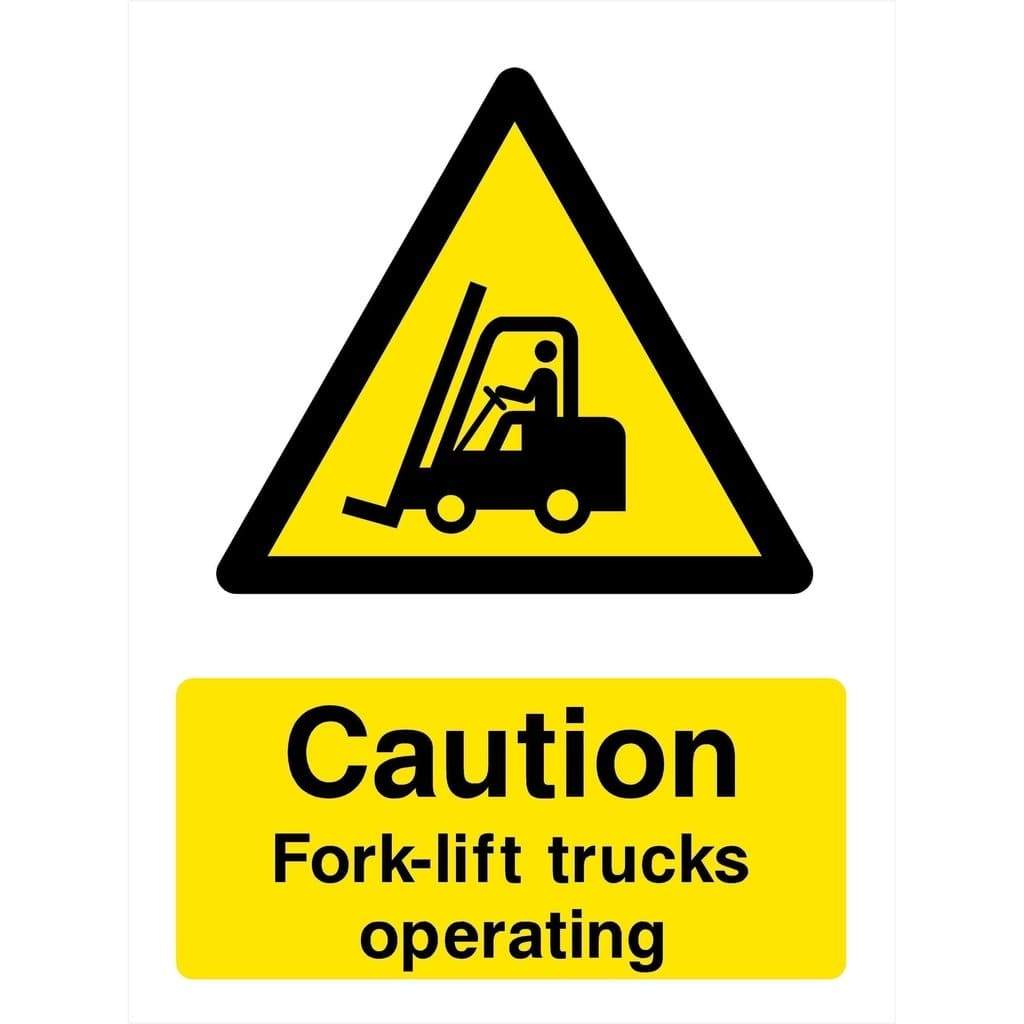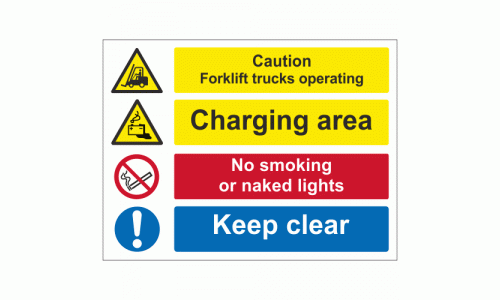Forklift Safety Signs-- Clear Communication for Safe Forklift Operations
Wiki Article
Trick Considerations for Designing Effective Forklift Safety And Security Indications
When creating effective forklift safety and security indications, it is critical to consider a number of fundamental elements that jointly ensure ideal presence and clarity. High-contrast colors coupled with large, legible sans-serif font styles dramatically enhance readability, specifically in high-traffic locations where fast understanding is essential. forklift signs. Strategic positioning at eye level and using durable materials like light weight aluminum or polycarbonate further add to the longevity and efficiency of these signs. Moreover, adherence to OSHA and ANSI guidelines not only systematizes safety and security messages yet also bolsters conformity. To totally comprehend the details and ideal practices included, a number of extra factors to consider merit closer interest.Shade and Comparison
While making forklift safety and security indications, the selection of shade and contrast is critical to making certain presence and efficiency. Colors are not just aesthetic elements; they offer important functional purposes by sharing certain messages quickly and decreasing the danger of accidents. The Occupational Safety And Security and Health And Wellness Management (OSHA) and the American National Specification Institute (ANSI) provide guidelines for making use of shades in security signs to systematize their meanings. As an example, red is usually made use of to signify prompt risk, while yellow signifies caution.Effective contrast between the history and the message or symbols on the sign is just as essential. High comparison guarantees that the sign is readable from a distance and in varying illumination problems. Black message on a yellow background or white text on a red history are mixes that stand out prominently. Additionally, making use of reflective products can boost visibility in low-light atmospheres, which is frequently a factor to consider in storehouse settings where forklifts run.
Using appropriate color and comparison not only adheres to governing standards yet also plays an essential role in keeping a safe workplace by guaranteeing clear communication of dangers and instructions.

Font Size and Style
When creating forklift safety and security indicators, the option of font style dimension and style is essential for making certain that the messages are understandable and promptly understood. The primary objective is to enhance readability, especially in environments where quick data processing is important. The typeface dimension ought to be large enough to be read from a distance, accommodating varying view problems and making sure that personnel can comprehend the indication without unnecessary stress.A sans-serif typeface is typically advised for safety signs due to its tidy and simple look, which improves readability. Fonts such as Arial, Helvetica, or Verdana are often liked as they do not have the complex details that can obscure critical details. Consistency in font design across all safety signs aids in developing an uniform and professional look, which additionally enhances the significance of the messages being shared.
Additionally, emphasis can be attained with strategic use bolding and capitalization. Trick words or expressions can be highlighted to attract instant focus to crucial instructions or cautions. Nonetheless, overuse of these techniques can lead to visual mess, so it is important to apply them judiciously. By thoroughly choosing ideal font style dimensions and styles, forklift safety signs can try this web-site successfully communicate vital safety details to all employees.
Positioning and Visibility
Ensuring optimal positioning and exposure of forklift safety signs is paramount in industrial settings. Appropriate indication positioning can substantially decrease the threat of crashes and boost total workplace security.
Signs should be well-lit or made from reflective products in poorly lit areas to ensure they are visible at all times. By meticulously considering these elements, one can make sure that forklift safety and security indicators are both effective and visible, thereby cultivating a more secure working environment.
Material and Toughness
Selecting the best materials for forklift safety indications is important to guaranteeing their long life and efficiency in commercial settings. Offered the rough problems usually encountered in stockrooms and making facilities, the materials chosen should endure a variety of stressors, including temperature level fluctuations, dampness, chemical direct exposure, and physical influences. Sturdy substratums such as light weight aluminum, high-density polyethylene (HDPE), and polycarbonate are prominent selections as a result of their resistance to these elements.Light weight aluminum is renowned for its toughness and corrosion resistance, making it an outstanding selection for both indoor and outside applications. HDPE, on the various other hand, uses extraordinary effect resistance and can endure prolonged exposure to rough chemicals without breaking down. Polycarbonate, understood for its high effect strength and quality, is usually utilized where presence and toughness are paramount.
Equally essential is the kind of printing used on the indicators. UV-resistant inks and protective coatings can substantially improve the lifespan of the signs by preventing fading and wear triggered by long term exposure to sunlight and other environmental factors. Laminated or screen-printed surfaces provide extra layers of defense, making certain that the crucial safety and security details stays readable in time.
Buying high-grade materials and robust manufacturing refines not just extends the life of forklift safety and security indicators but also strengthens a culture of safety and security within the office.
Compliance With Laws
Sticking to governing criteria is paramount in the style and implementation of forklift safety and security indicators. Conformity ensures that the signs are not just effective in conveying essential security info however likewise fulfill lawful commitments, therefore minimizing possible responsibilities. Numerous companies, such as the Occupational Security and Wellness Administration (OSHA) in the USA, supply clear standards on the specs of safety and security indicators, including color design, message size, and the incorporation of widely acknowledged icons.To abide by these regulations, it is vital to perform a thorough evaluation of appropriate standards. For instance, OSHA mandates that safety indicators have to be visible from a distance and consist of specific colors: red web link for risk, yellow for caution, and environment-friendly for safety and security directions. Furthermore, adhering to the American National Recommended Reading Criteria Institute (ANSI) Z535 series can better enhance the effectiveness of the indicators by systematizing the design components.
Additionally, normal audits and updates of security indicators ought to be carried out to guarantee ongoing compliance with any type of modifications in regulations. Involving with certified safety and security experts throughout the style stage can also be valuable in guaranteeing that all governing requirements are met, and that the indications serve their desired function effectively.
Final Thought
Creating effective forklift security signs requires cautious attention to shade contrast, font size, and design to make sure optimum exposure and readability. Adherence to OSHA and ANSI standards standardizes safety messages, and including reflective materials raises exposure in low-light situations.Report this wiki page